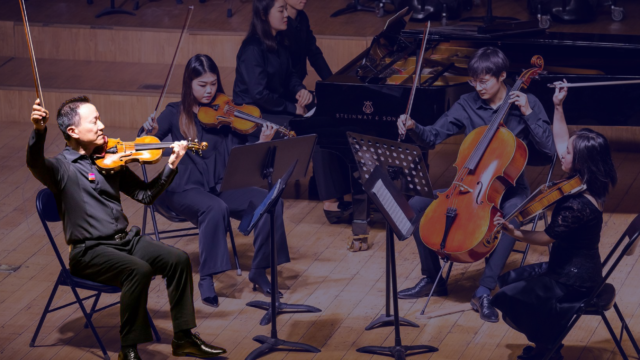Demographics Summary
In This SectionOrchestras’ work to improve diversity of representation will shape the future of the artform and the field. While showing positive change in the diversity of repertoire performed by orchestras, our data highlights the work ahead for orchestras to accelerate progress on-stage and within their own organizations.
Diversity of representation is a key indicator of progress in any organization’s journey towards equity and inclusion. Alone, however, it is not enough. In order to be successful, diversification must be underpinned by sustained change to internal culture, processes, practices, resourcing, and partnership building. Only by making this investment can an orchestra build an inclusive workplace, that values and nurtures the talents of the diverse musicians, staff members, conductors and board members it needs.
The 2024 data presented here updates the analysis conducted for the League’s 2023 report Racial/Ethnic and Gender Diversity in the Orchestra Field 2023. Definitions and technical notes concerning sample size and representativeness, can be found in this report.
Please note that youth orchestra data is included only for the following analyses: top executives; music directors; and conductors, including assistant conductors and music directors.
Every orchestra has its own unique story to tell within the national narrative presented here — not only about diversity of representation, but also about its own progress toward building an inclusive and equitable organizational culture.
Musician Diversity
The decade 2014-2024 saw little progress towards improving the very low representation of Black musicians, and only modest increases for other BIPOC groups. The representation of most BIPOC groups remained very low: in 2024, 2.3% of surveyed orchestra musicians were Black, 4.6% were Hispanic, 11.7% were Asian, 2.1% were multiracial, 0.5% were American Indian, 0.2% were Native Hawaiian, and 78.6% were White.
In 2024, women and non-binary individuals comprised almost half of the orchestra musician population, but their representation was highest in smaller to medium budget orchestras.
Visit our Musician Diversity page for graphs, charts, and more detailed data.
Conductor Diversity
Both racial/ethnic and gender diversity improved significantly during the period 2014-2024, with notable progress made in the representation of all racial/ethnic groups.
By 2024, BIPOC representation among conductors reached 30.3%, nearing comparison with the U.S. population overall, while the representation of women and non-binary individuals reached 29.3%.
Visit our Conductor Diversity page for graphs, charts, and more detailed data.
Music Director Diversity
In 2024, the vast majority of Music Directors were male and White. Only modest overall progress was made during the decade 2014-2024: Black representation decreased, as did the representation of women music directors in larger budget orchestras.
Visit our Music Director Diversity page for graphs, charts, and more detailed data.
Staff Diversity
Following a decade of moderate growth overall and a strong increase in Black representation during the pandemic years, BIPOC representation reached 23.3% in 2023.
In common with other performing arts sectors, women’s representation was higher than men’s throughout the decade, while non-binary representation notably increased.
Further research is needed to better understand the relationship between race, gender and positional power within orchestras.
Visit our Staff Diversity page for graphs, charts, and more detailed data.
Top Executive Diversity
From a low starting point, BIPOC representation among top executives doubled between 2014 and 2024. Despite this progress, in 2024, White individuals still held 91.3% of top executive positions.
Women and non-binary individuals’ representation almost mirrored the U.S. population throughout the decade, but was highest within smaller to medium budget organizations. As a point of comparison, in 2021 75% of top executives in the broader non-profit sector were women.
Visit our Top Executive Diversity page for graphs, charts, and more detailed data.
Board Diversity
From a low starting point, BIPOC representation on orchestra boards more than doubled between 2014 and 2024. Despite this progress, in 2024 racial/ethnic diversity trailed behind the wider non-profit sector, with White individuals still holding 82.6% of orchestra board positions.
Gender parity was maintained throughout the decade 2014-2024, but the representation of women and non-binary individuals was highest in smaller to medium budget organizations.
Visit our Board Diversity page for graphs, charts, and more detailed data.
In This Section
Become a member
Thank you for your interest in the League of American Orchestras! We are dedicated to advancing the orchestral experience for all.
Join Now